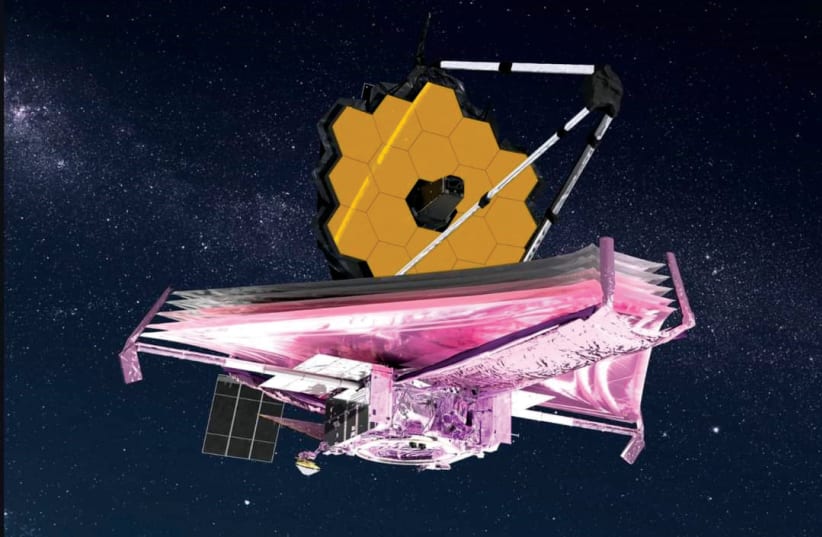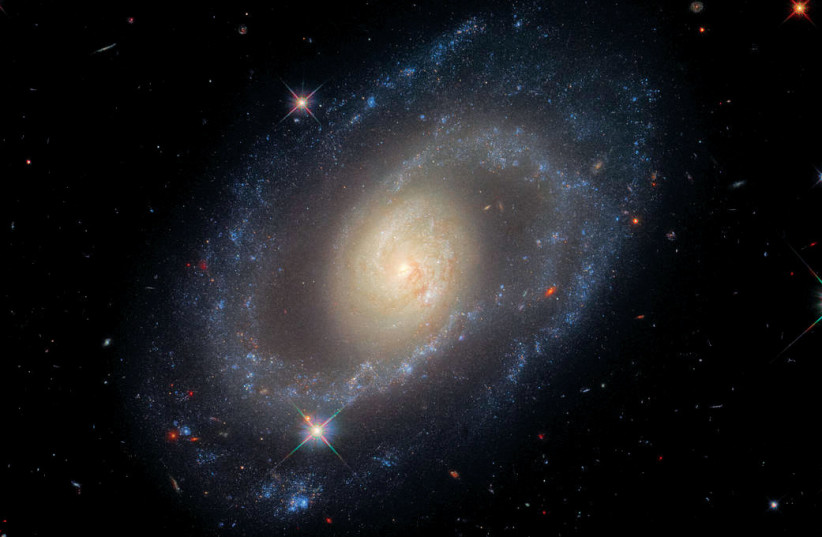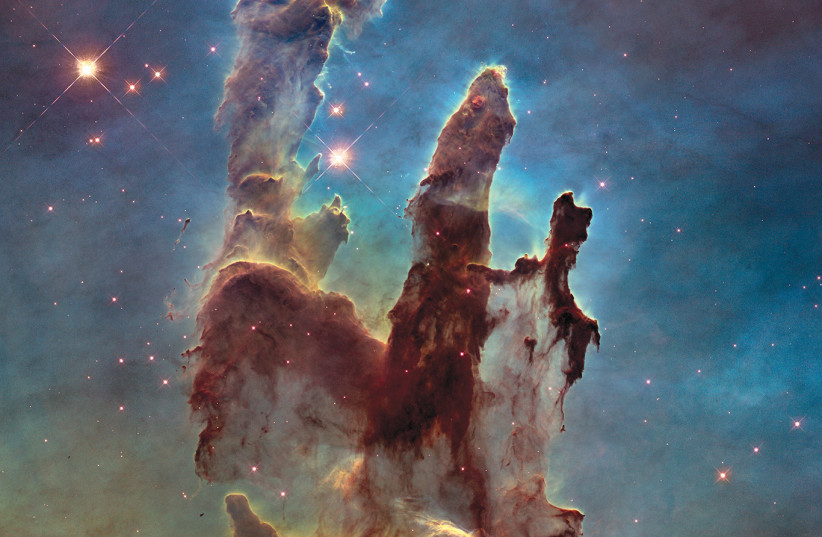For millennia, humanity has looked to the stars and pondered whether we are indeed alone in the Universe, and whether the answers to our existence are written in the stars.
The Hubble Space Telescope, launched in 1991, was the first to provide scientists with glittering images of nebulas or star-forming regions, distant galaxies, and zoom in on other planets and their moons. While the telescope continues to orbit the Earth, it is limited in scope as it can only capture images in the visible spectrum.
For the past 30 years, NASA scientists have been working on the next big project — the James-Webb Space telescope (JWST) — which was launched into space on Christmas Day and will attempt to photograph celestial bodies in the infrared spectrum, providing scientists with further clues as to how creation commenced.
Scientists hope to use JWST to peer into the earliest images of the cosmos, by taking pictures of the first galaxies formed right after the Big Bang, nearly 100 million years old.
The highly sophisticated instrument was engineered to operate at very cold temperatures (from around -223° C or -370° F), and cost $10 billion to construct its combination of complex mirrors and tools. It will also search for other life forms in areas where scientists believe may harbor life, such as Saturn’s and Jupiter’s moons, Enceladus and Europa.
If that isn’t impressive enough, the Jewish nation played a small but impressive part in helping accomplish this feat. The Jerusalem Report spoke with Dr. Eliad Peretz, a program manager at NASA’s Goddard Space Flight Center, and Dr. Adi Ninio-Greenberg, a planetary scientist at the Israel Space Agency who relayed some scientific plans for the extensive project.
It isn’t a simple journey to land at the world’s top space agency. Peretz serves as lead researcher for New Space Missions for renowned astrophysicist and cosmologist Dr. John Mather. Mather also serves as the JWST project scientist who was awarded the Nobel Prize in physics in 2006 for his work studying the pattern of remnant radiation following the Big Bang.
According to the widely accepted theory, the universe was originally a very hot place, but as it expanded the gas within it cooled down. Mather was able to map primordial hot and cold spots in that area, known as the cosmic microwave background radiation. Those areas have been regarded as the seeds for giant clusters of galaxies that scientists believe were some of the first to ever be found, and stretch hundreds of millions of light-years across the Universe.
“I knew I wanted to work for NASA ever since I was five and gazed up at the stars,” says Peretz, adding that he pursued a bachelor’s in aerospace engineering at the Technion Institute of Technology, and later a master’s and PhD at Cornell University.
As of now, Hubble plans on operating in parallel to JWST. “Hubble was used to discover planetary systems outside of our solar system, something it was not designed to do,” Peretz explained. “We might discover new ways to use Webb as science advances. JWST embarked on its month-long journey to L2, an area where the gravitational power from the Earth, Sun, and Moon balances out perfectly and enables the telescope to operate in an area with colder temperatures and low gravity so that it can clearly observe objects in the infrared spectrum, which are invisible to the human eye.”
The telescope is also equipped with a sun shield on the bottom, which acts as a buffer between the hotter side that faces the Sun, and protects the sensitive optical mirrors and instruments that need colder temperatures to function properly. Since it needed to be compacted for launch, the telescope underwent a long process of slowly and securely unfolding certain parts in space. In a few months, it will begin observing two main regions. And scientists are waiting with bated breath to receive those first few images.
“It’s super exciting,” says Peretz.
Some of its first targets include Enceladus and Europa, where scientists have seen traces of plumes of gas emanating from the celestial bodies, possibly from water signatures. Many believe that subsurface oceans might exist beneath the moons’ icy exteriors.
JWST also plans on capturing images of Alpha Centauri, a nearby galaxy and our closest neighbor, which could prove to be a habitable zone.
“It also has interesting planetary bodies orbiting around a central star, much like our sun,” Peretz says. “It’s unclear what might be out there. We also want to look for some of the earliest stars and galaxies, which were formed right after the Big Bang.”
He recalled Hubble’s famous image “Pillars of Creation,” within the Eagle nebula, where columns of dust swirl out of cloud-like pillars. In the image, stars can be viewed emerging from dark mysterious clouds. Webb, however, will allow scientists to peer through that dust and see stars in the infrared as they are forming.
“That can tell us a lot about the creation of the Universe,” he said. “It gets us back to one of our main questions in astrophysics: how does the Universe work, and how did we get here? We aim to explore the origin of the evolution of galaxies, stars and planets that make up our Universe.”
Ninio-Greenberg said that JWST “will allow us to look back in time, and see the Universe in its primordial conditions, and some of the earliest galaxies, which are 100 million years old (for reference, our Universe is 13.8 billion years old). JWST will also look for life outside of Earth, and search for exoplanets or similar solar systems near our Milky Way galaxy. The telescope can measure exoplanets’ atmospheres and their components, and see whether they’re habitable for humans.
“The telescope can measure the amount of light that stars emit, but if an exoplanet is in the way it could potentially block out light from that star. We can see what its atmosphere is composed of, by using the telescope’s mirrors to remove its light intensity like in an eclipse. We can then measure the atmosphere by using infrared light, which is sensitive to chemical signatures of molecules in the atmosphere.”
A veteran of the Israeli Air Force where she served as head of Space Division Technologies, she also holds a PhD in astrophysics from Tel Aviv University. And Ninio-Greenberg has been looking up at the stars since she was a child.
“When I was nine years old, my father told me that looking to the stars is like looking back in time, and I believe that this telescope is the greatest time machine engineered in human history,” she says. “We want to study those earliest galaxies, and gaze at the broadest and deepest sections of the Universe, which will give us clues as to how it all began.”
JWST is uniquely constructed and enables it to gather light from far-off objects that emit weak light. It can also provide sharper resolution for objects closeby. “You could even see a bee on the Moon,” she quipped.
The instrument includes a hefty sun shield — the size of a tennis court — to protect the telescope’s sensitive optical systems and ensure they don’t overheat. Over the past few weeks, JWST has managed to unfold successfully in space. But capturing those spectacular images of the heavenly bodies and providing scientists with clues to how it all began isn’t the end, but merely the beginning.
“We’re now thinking about what this mission could mean to future missions, what else we could explore, and are already learning how to create new telescopes,” said Peretz.
As science teaches, there is always more left to explore. And when it comes to Webb, the questions are infinite and abound. Perhaps the questions that humanity will attempt to answer aren’t so far away after all. ■


